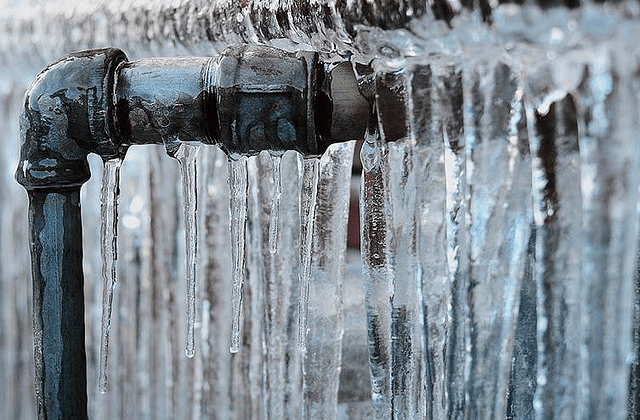Avoiding Frozen Plumbing in Winter: Essential Strategies
Avoiding Frozen Plumbing in Winter: Essential Strategies
Blog Article
How do you actually feel in relation to Helpful Tips to Prevent Frozen Pipes this Winter?

Cold weather can wreak havoc on your plumbing, especially by freezing pipes. Below's just how to stop it from taking place and what to do if it does.
Intro
As temperature levels decrease, the threat of frozen pipes boosts, potentially causing expensive repair services and water damage. Recognizing just how to prevent icy pipes is essential for house owners in cool environments.
Avoidance Tips
Protecting vulnerable pipelines
Cover pipes in insulation sleeves or utilize warm tape to protect them from freezing temperature levels. Focus on pipelines in unheated or exterior locations of the home.
Heating techniques
Maintain interior rooms effectively warmed, specifically locations with pipes. Open up cabinet doors to enable warm air to distribute around pipelines under sinks.
Just how to determine frozen pipes
Try to find reduced water flow from taps, unusual smells or noises from pipelines, and noticeable frost on subjected pipelines.
Long-Term Solutions
Structural adjustments
Consider rerouting pipelines far from exterior wall surfaces or unheated areas. Add extra insulation to attic rooms, basements, and crawl spaces.
Updating insulation
Purchase high-quality insulation for pipelines, attics, and walls. Correct insulation aids maintain regular temperature levels and decreases the danger of frozen pipes.
Shielding Outdoor Pipes
Yard tubes and exterior faucets
Detach and drain pipes yard hose pipes before winter season. Mount frost-proof spigots or cover outside taps with protected caps.
Understanding Frozen Pipelines
What causes pipes to freeze?
Pipes ice up when exposed to temperatures below 32 ° F (0 ° C) for extended durations. As water inside the pipelines ices up, it broadens, taxing the pipeline wall surfaces and potentially causing them to rupture.
Dangers and problems
Frozen pipelines can cause supply of water disturbances, residential or commercial property damage, and costly repair work. Burst pipelines can flood homes and trigger considerable structural damage.
Signs of Frozen Pipes
Determining frozen pipelines early can stop them from rupturing.
What to Do If Your Pipelines Freeze
Immediate activities to take
If you think icy pipelines, keep taps available to alleviate pressure as the ice thaws. Use a hairdryer or towels soaked in warm water to thaw pipes gradually.
Verdict
Avoiding icy pipes requires aggressive measures and quick feedbacks. By comprehending the causes, indicators, and preventive measures, property owners can secure their pipes throughout winter.
6 Proven Ways to Prevent Frozen Pipes and Protect Your Home
Disconnect and Drain Garden Hoses
Before winter arrives, start by disconnecting your garden hoses and draining any remaining water. Close the shut-off valves that supply outdoor hose bibs and leave the outdoor faucet open to allow any residual water to drain. For extra protection, consider using faucet covers throughout the colder months. It’s also important to drain water from any sprinkler supply lines following the manufacturer’s directions.
Insulate Exposed Pipes
Insulating your pipes is an effective way to prevent freezing. Pipe insulation is readily available at home improvement stores and is relatively inexpensive. Pay close attention to pipes in unheated areas such as the attic, basement, crawl spaces, or garage. Apply foam insulation generously to create a buffer against the cold. You can also wrap your pipes in heat tape or thermostat-controlled heat cables for added warmth.
Seal Air Leaks
Inspect your home for any cracks or openings that could let in cold air. Seal any holes around the piping in interior or exterior walls, as well as the sill plates where your home rests on its foundation. Additionally, make sure to keep your garage door closed unless you’re entering or exiting. Leaving it open creates a significant air leak that can lead to frozen pipes.
Allow Warm Air Circulation
During cold snaps, it’s essential to allow warm air to circulate evenly throughout your home. Leave interior doors ajar to promote better airflow. Open kitchen and bathroom cabinets to help distribute heat consistently around the rooms. If you have small children or pets, be sure to remove any household chemicals or potentially harmful cleaners from open cabinets for safety.
Let Faucets Drip
A small trickle of water can make a big difference in preventing ice formation inside your pipes. When temperatures drop significantly, start a drip of water from all faucets served by exposed pipes. This continuous flow helps prevent the water from freezing. Additionally, running a few faucets slightly can relieve pressure inside the pipes, reducing the chances of a rupture if the water inside does freeze.
https://choateshvac.com/6-proven-ways-to-prevent-frozen-pipes-and-protect-your-home/

Hopefully you liked our excerpt about How To Avoid Freezing Pipes. Thanks for finding the time to browse our posting. Sharing is nice. Helping others is fun. I value your readership.
Call Today Report this page